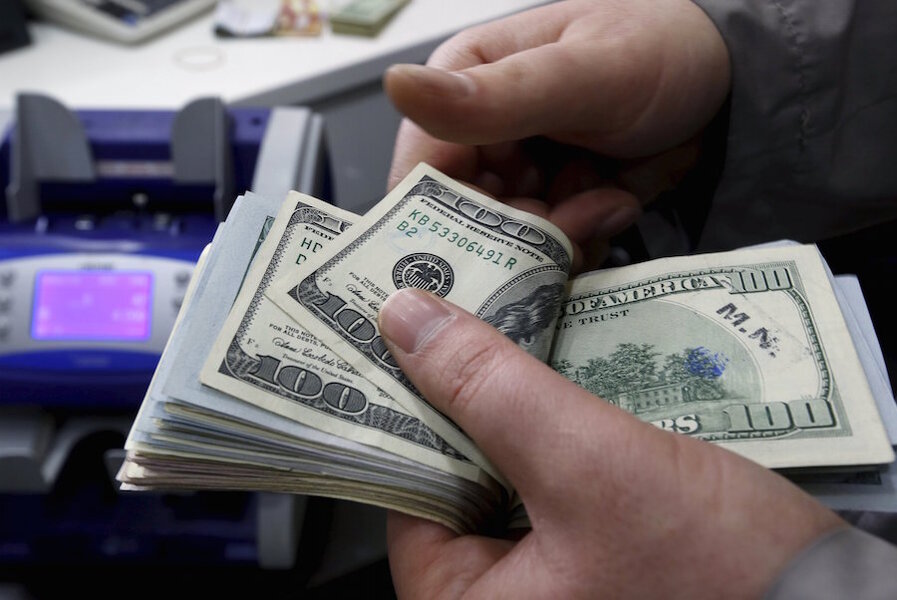Four ways to save without your savings account
Loading...
A saving strategy that doesn’t feature a savings account might seem counterintuitive, like trying to get in shape without a gym membership. But you don’t need elaborate equipment to break a sweat, and you don’t have to depend on your savings account to boost your nest egg.
With low interest rates, you won’t see significant growth in your account, so the following strategies could prove to be much more effective.
1. Use certificates of deposit to set aside cash
The benefits of certificates of deposit may not be obvious right away. To some people, CDs might even sound like a borderline scam: You’re telling me my money is locked away for up to five years, and if I want to withdraw it early, I’ll be charged a fee?
That is correct. But look at it this way: If you want to save $1,000 for an island getaway, it’s best to shove that money to the side and forget about it. If you keep that cash in a standard savings account, you might dip into it when your checking account is running low. Put it in a CD, and it will be there when you need it.
Plus, long-term certificates — those with term lengths between three and five years — typically have better annual percentage yields than even the best savings accounts. And short-term CDs will still help you achieve your more immediate savings goals, such as a vacation, even though their interest rates aren’t quite as strong. Check out NerdWallet’s best CD rates tool to see what’s available.
2. Control your spending with a prepaid card
Say you saved up for that vacation and are sunning yourself on some far-off beach. Life is good: Your relaxation levels have reached a new peak, and you’re close to becoming the human embodiment of an Enya song.
But you’ve also let your guard down, which can leave you prone to impulse purchases. New rainstick? Sure. Wildly overpriced banana boat ride? Why not?
That’s when a prepaid debit card can come in handy. This payment method doubles as a budgeting tool. Unlike with other plastic, you can limit your spending to only the cash loaded onto your prepaid card, so you won’t have to raid your savings to cover next month’s credit card bill. The best prepaid debit cards have no monthly fees, and it doesn’t cost much to load money onto them.
3. Set alerts on your checking account
Online banking has made it easier than ever to unleash your inner control freak, which can be helpful when it comes to saving money.
At most banks, customers can choose to receive texts or emails when their checking account balance goes below a certain amount. That’s primarily to protect you from overdraft fees, but can also help you monitor and rein in your spending, and, in turn, keep your savings intact.
You can set this limit as high as you’d like and change it over time. Like a prepaid debit card, alerts also can help you control your spending.
4. Find a no-fee account, trim other expenses
At $12 a month, it can be tempting to write off a bank’s maintenance fee as a minor inconvenience. But if you were to put that cash in a retirement account and give it some time to grow, it wouldn’t feel so insignificant.
Say that $12 went into your 401(k) plan each month and stayed there for 30 years. Assuming a 6.5% rate of return, you’d be left with an additional $13,000 — not enough to retire, but a solid addition to your post-work fund, and a good incentive to switch over to a no-fee savings account.
Next, re-evaluate your budget. Make cuts where possible. That doesn’t mean resorting to DIY haircuts and a diet of SpaghettiOs and Pop-Tarts. Using the extra dough to increase your monthly retirement contributions by a few percentage points will allow you to reap a nice reward down the road, thanks to compound interest. Alternatively, you could use that extra cash to pay down high-interest debt. Any kind of adjustment to your spending and savings habits, no matter how small, can make a big difference over time.
Tony Armstrong is a staff writer at NerdWallet, a personal finance website. Email: tony@nerdwallet.com. Twitter: @tonystrongarm.
This article originally appeared on NerdWallet.







